Your Cart is Empty

Agate sometimes gets shunted to the side when we talk about gems, in part because it is so common and not as valuable as rarer gemstones. However, agate can have some of the most extraordinary combinations of color and depth not found in other stones. The best agate specimens look like miniature paintings, with translucent layers of colors, and inclusions as delicate and deliberate as brushstrokes. From the simple, to the sublime, there is plenty to love about agate.
Agate is a broad umbrella term that covers chalcedony gemstones of many different, colors, patterns, and translucencies. It is generally accepted, however, that for chalcedony to be considered agate, it must be banded. There are exceptions (such as moss or plume agate), but often agate will have striped variations in color. Agate is found in almost every color of the rainbow, as well as white, gray, and black. Because of the porous nature of agate, it is often dyed artificially in more exotic shades, such as magenta and bright blue. Agate falls at 6.5 to 7 on the Mohs hardness scale.

The name agate derives from the location where it was discovered – the Achates River (now known as the Dirillo River) in Sicily, Italy. The stone was believed to have been discovered by Greek philosopher Theophratus in the 3rd or 4th century BCE. Since its initial discovery, agate deposits have been found all over the world, and are accessible to amateur gem hunters.
The Idar-Oberstein region of Germany has a significant history with agate that started in the late 1400's. Commercialized mining of agate, jasper, and quartz in the region attracted skilled gem cutters and artisans, and soon Idar-Oberstein gained a reputation for excellent agate lapidary. Even after the agate mines were depleted in the 19th century, Idar-Oberstein continued to be a hub for gem-cutting, and agate mined from Brazil would be shipped over for cutting and polishing. Though the industry is no longer as big as it was, to this day Idar-Oberstein is home to exceptional agate artisans.
Agate primarily formed in the holes of volcanic rocks known as basalt. As silica-filled water bubbled up from the earth's depths, it flowed into these holes and crystalized in layers, creating the characteristic banding in the shape of the cavity it formed in. The variations of trace minerals and quartz crystallization is what creates such a wide variety of agate colors and types.

Agate and jasper sometimes get confused, as there are many varieties of each. They are both forms of chalcedony and come in many different colors. The main distinguishing difference is the transparency: jasper is the opaque variety of chalcedony, while agate is the translucent to transparent banded form of chalcedony. The impurities in agate that cause variations in color can also cause variations in translucency, however, making classification more difficult.
A specimen of agate may appear solid and opaque at first, but hold it up to the light, or shine a flashlight behind it, and you will see that the light is able to penetrate, however slightly. Jasper, on the other hand, completely blocks out the light. The more you compare agate and jasper, the more you will see that the look of the banding in agate is very different than any banding that may be found in jasper. As with all gemstones, we recommend you stop into one of our stores to get the best feel for the properties (and beauty) of agate.
Specialty types of agate are either named for their unique appearance, or for the location in which they are found. There are many varieties of agate, but here are some of the most common types you are likely to see in jewelry.
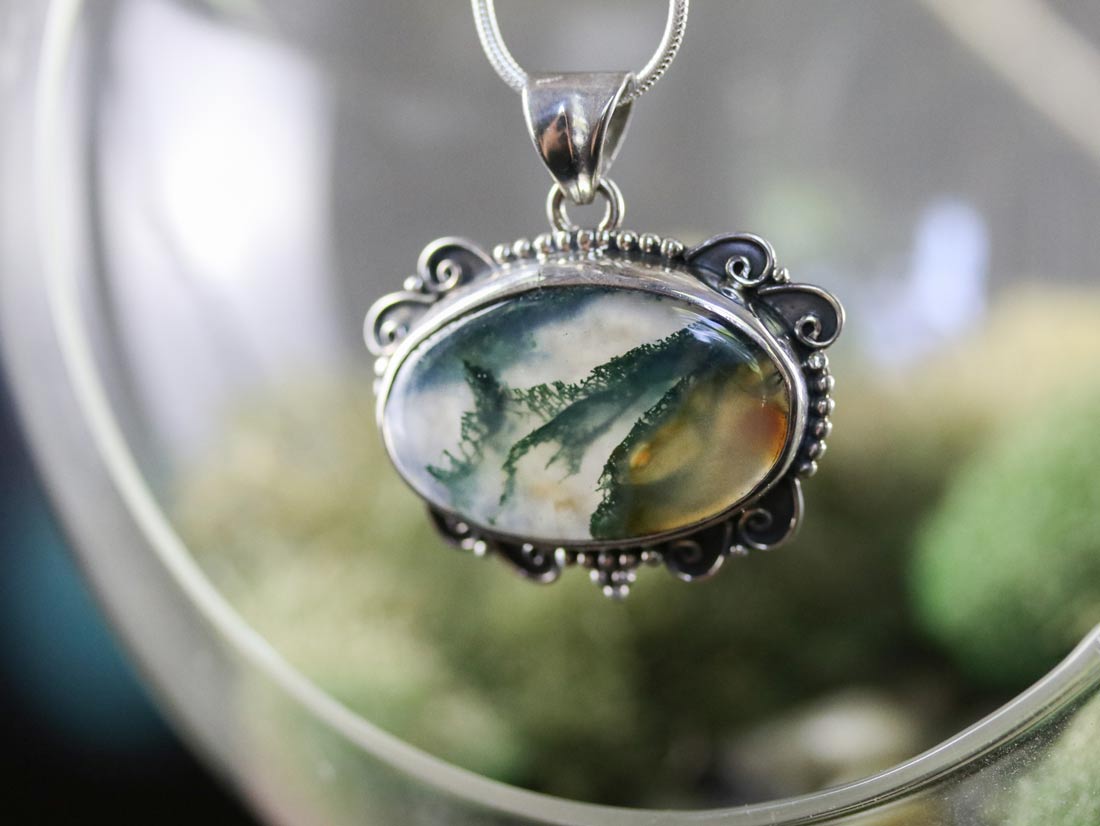
Not technically a true agate because it lacks agate’s characteristic banding, moss agate is clear to white with distinctive green moss-like inclusions. These green inclusions are caused by the trace minerals hornblende or chlorite. Sometimes the name moss agate is used interchangeably with dendritic agate, because the look of the inclusions is similar, but generally, the word “moss” is reserved for green inclusions. Sources for moss agate include the U.S., India, and Scotland.
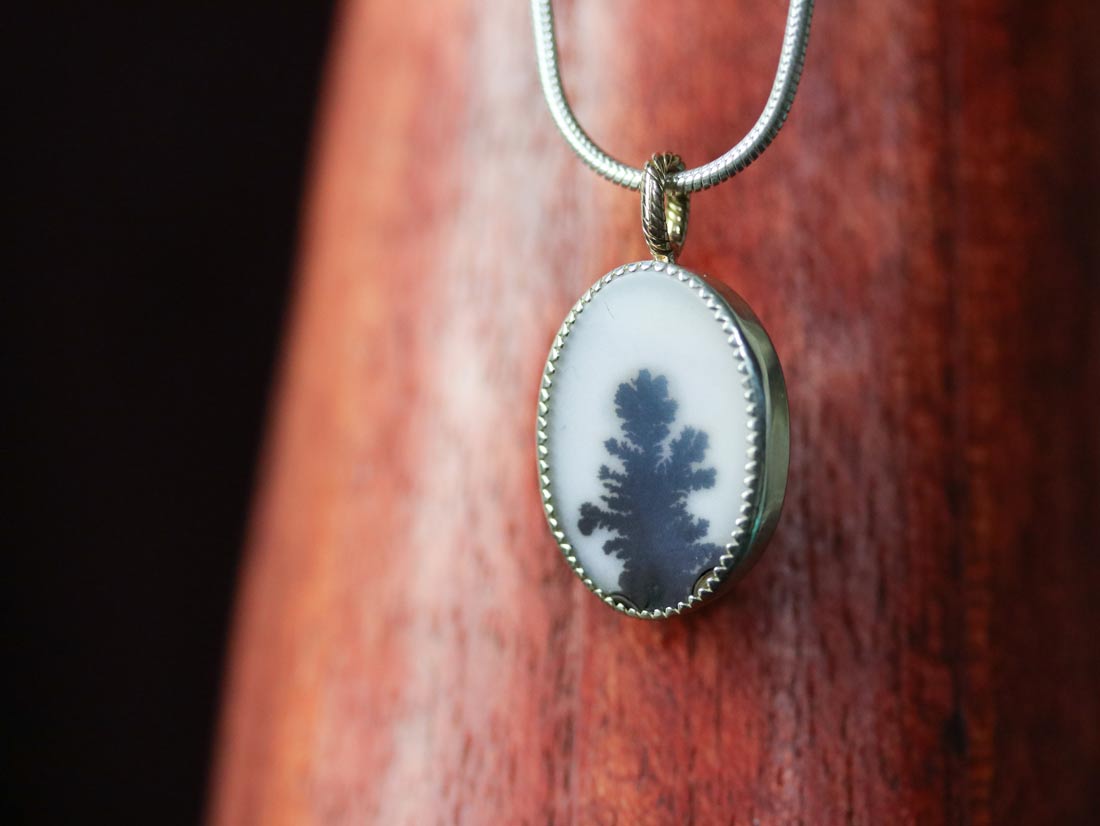
Similar to moss agate, dendritic agate lacks the usual banding, and instead has dark, tree-like inclusions of iron or manganese. Aptly named, the word dendrite derives from the Greek word for tree-like. Dendritic agate can be quite beautiful, and may give the appearance of a miniature landscape or nature scene. Sources for dendritic agate include Brazil, India, Kazakhstan, Madagascar, Mexico, and the U.S.
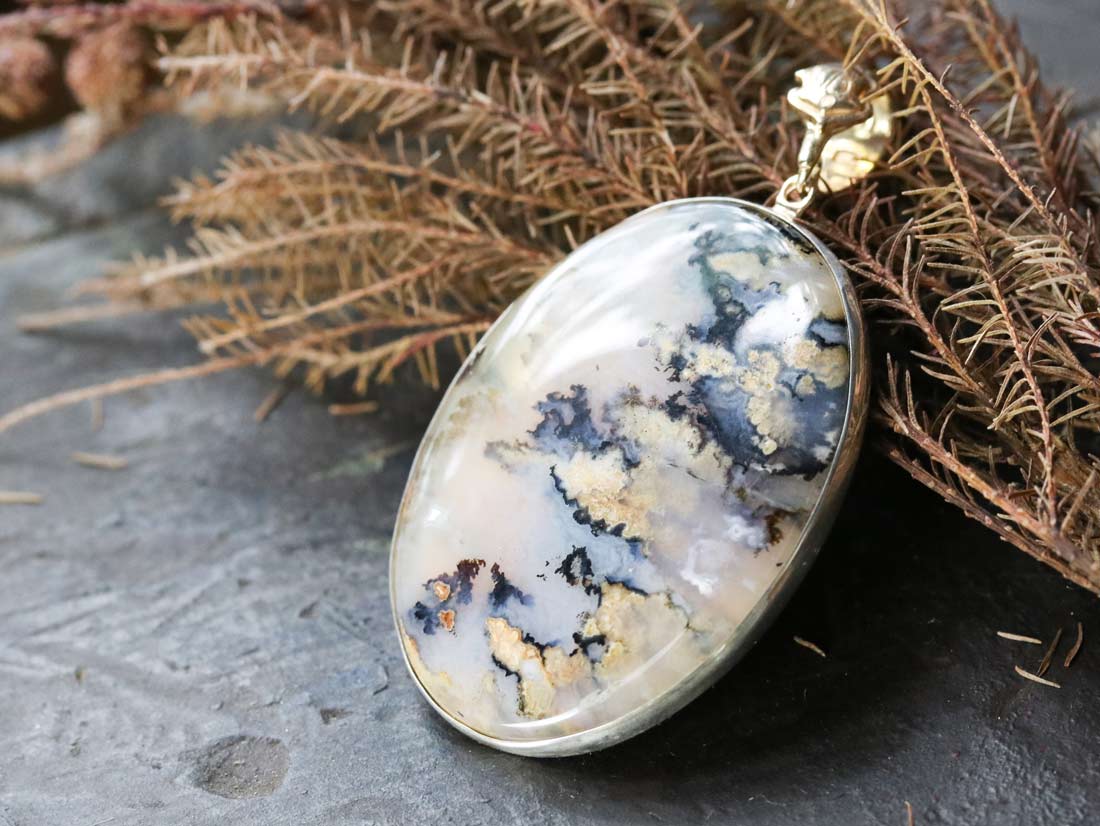
Plume agate is the third type in this trio of non-banded agates, featuring inclusions that look like plumes of ostrich feathers. Plume agate comes in a wide variety of colors, but is often found in shades of red, orange, and yellow. Though named for its feather-like inclusions, plume agate may also resemble an underwater coral reef, full of depth and color.
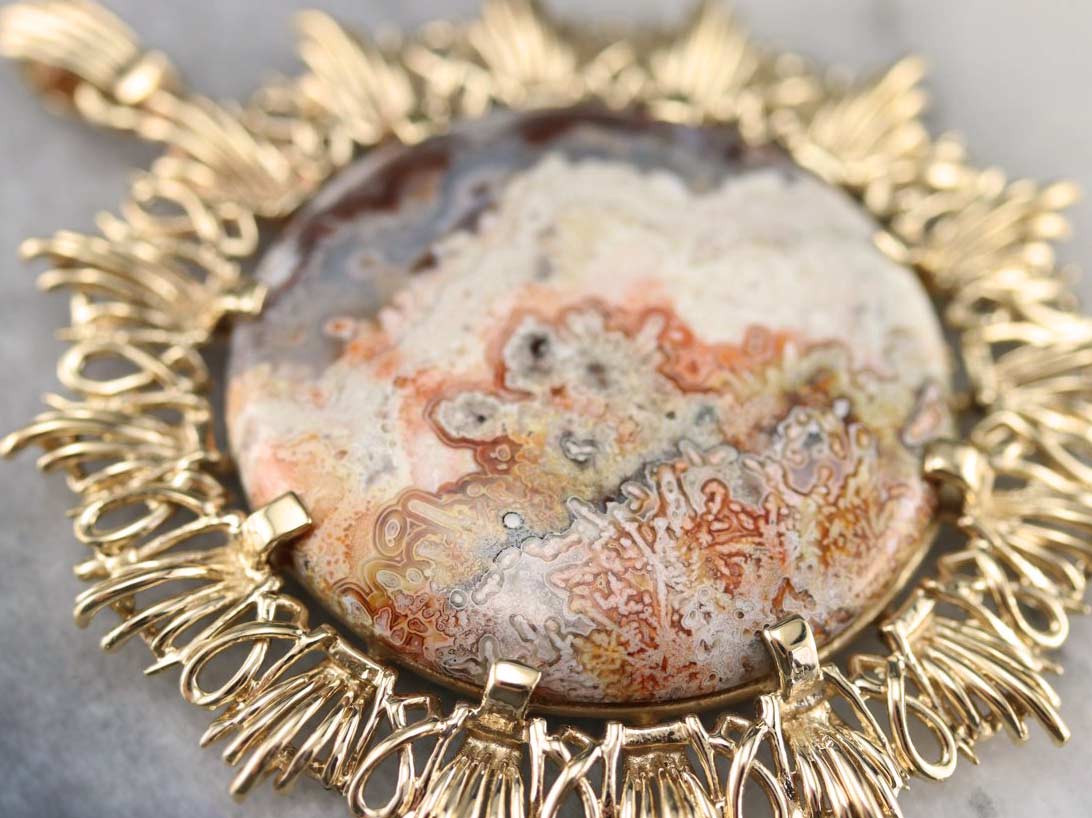
Crazy lace agate has very wavy bands and sometimes “eyes” (concentric banding), often in shades of red, yellow, and white. Lace agate refers to the thin bands that pattern the stone, so what makes lace agate “crazy”? Crazy lace agate has so many bands and inclusions that the result is a very detailed design, with many intricacies and variations in hue. Crazy lace agate is found exclusively in the Chihuahua region of Mexico.
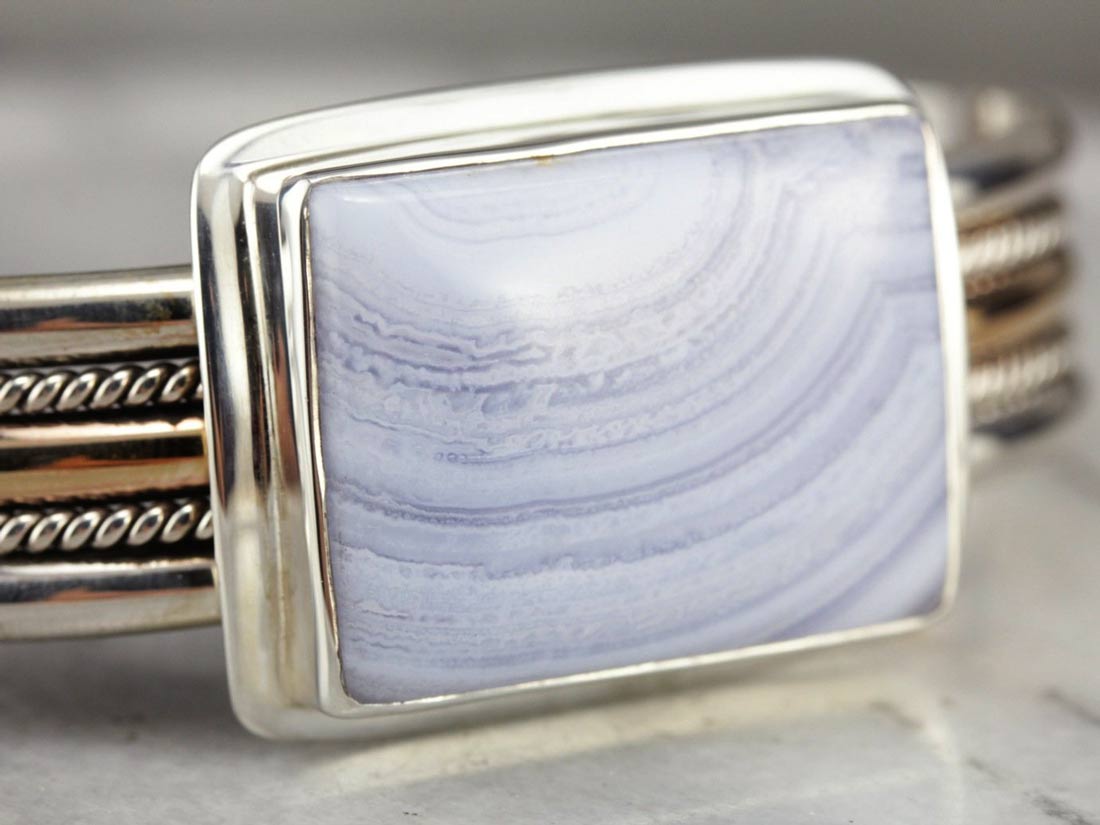
Blue lace agate has light blue and white bands, and is often delicate looking. Unlike crazy lace agate, blue lace agate is muted in color, with varying tones of pale, cornflower blue. This variety of agate tends to be more uniform in banding, with thin, wavy lines. Sources for blue lace agate include Namibia, South Africa, Kenya, and Romania.

Fire agate has goethite or limonite inclusions that create an iridescent color play (not unlike the fiery color play of an opal), often orange to deep brown with flashes of green. The main body color of fire agate is usually dark, adding to the drama when the light hits it and you see a fiery glow that seems to come from within. Sources for fire agate are the United States and Mexico.
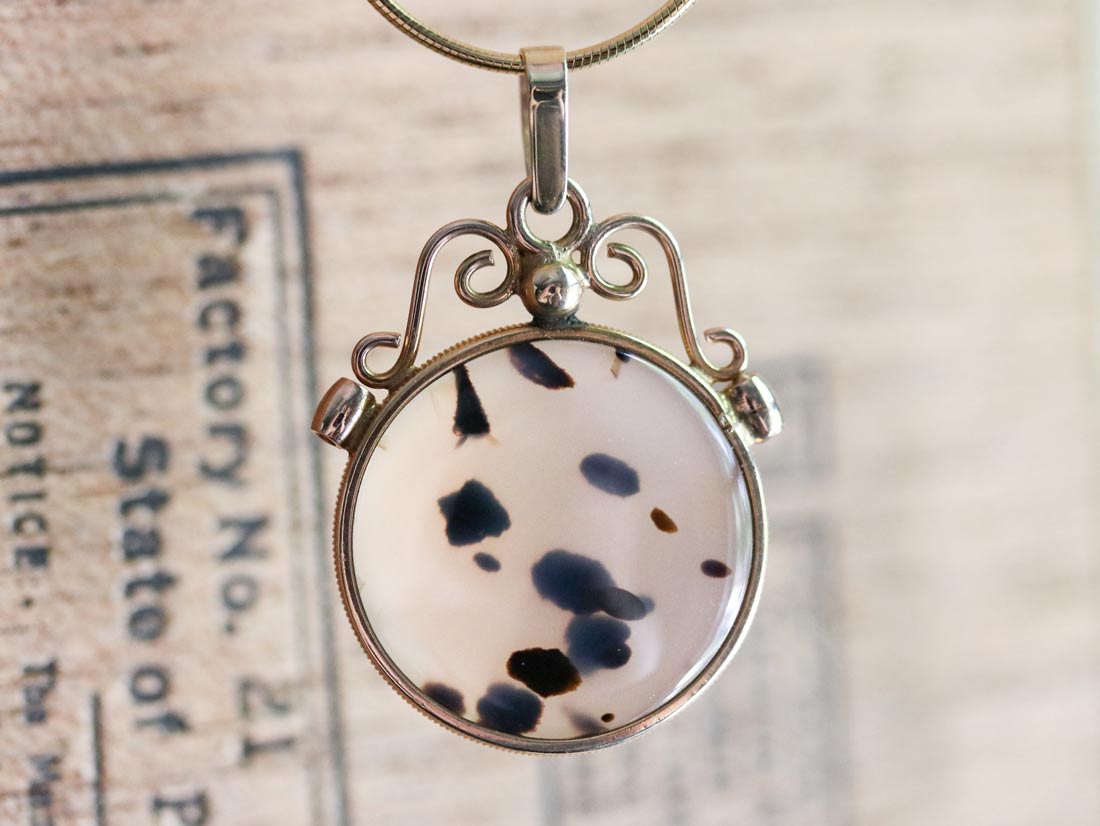
Montana agate is one of the varieties of agate that is distinguished for its beauty. Characteristically, Montana agate has a colorless body with black and orange to brown inclusions. The overall look of the best Montana agate specimens is elegant simplicity and sophisticated colors. Most Montana agate is found around the Yellowstone River.
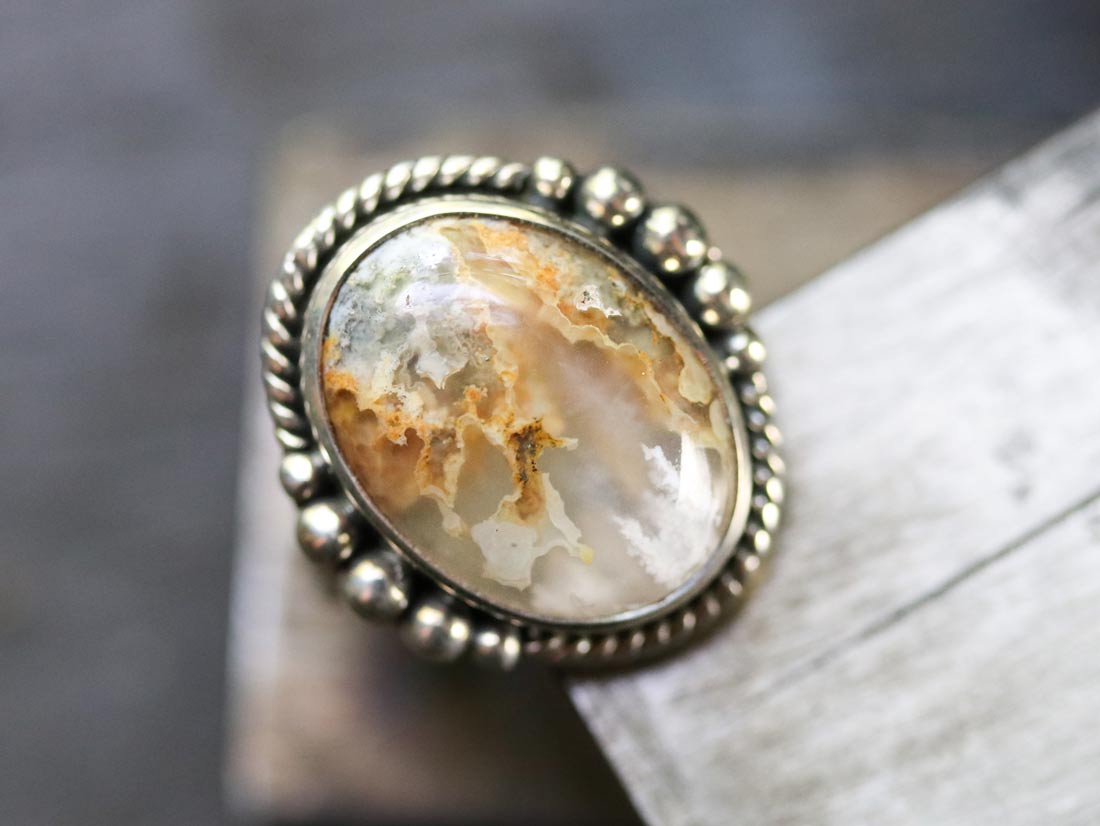
Another regional variety of agate distinguished for its beauty is Graveyard Point plume agate. Graveyard Point is in the Owyhee Mountains in eastern Oregon, an area known for its exceptional agate and jasper. This type of plume agate can have extraordinary depth, with colors of yellow, orange, white, and grey, and calls to mind the moody paintings of J.M.W. Turner.
Found in the African nation of Botswana, this agate is distinguished by thin bands of white with colors of peach or purplish brown. Traditionally, Botswana agate was used in fertility ceremonies to aid in conception and healthy offspring. Like lace agate, the thin style of banding and soft colors in Botswana agate give it a sophisticated look.
As you can see, agate is so varied that it is easy to find a stone to fall in love with. Thanks to the accessibility of this gemstone, you can find agate jewelry in many different price ranges and styles. From sterling silver bohemian jewelry, to more minimalist gold settings, there is an agate piece for everyone. To start a collection of your very own, shop a selection of our agate jewelry on our website, or stop into one of our stores to view even more styles!

